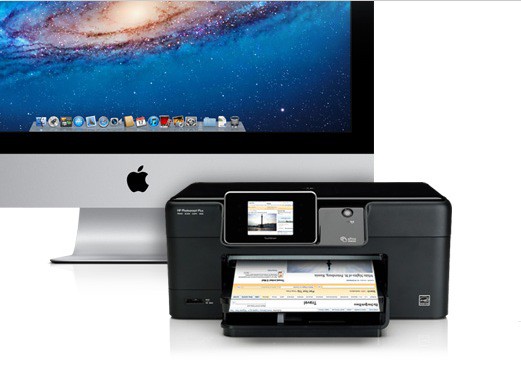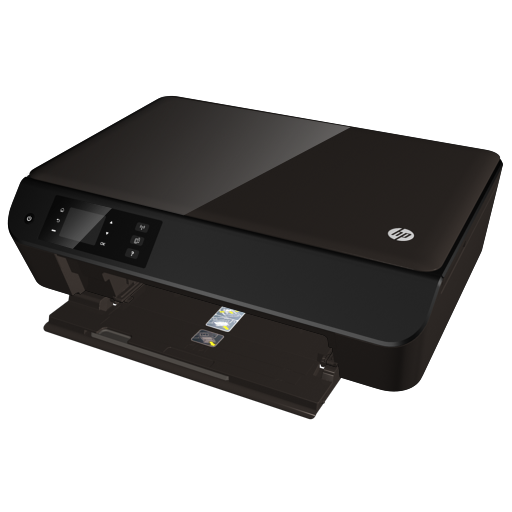

- #Printers for mac computer mac os#
- #Printers for mac computer drivers#
- #Printers for mac computer driver#
- #Printers for mac computer pro#
- #Printers for mac computer code#
(Technically, when you create a printer queue, a copy of the PPD is created for that printer, which will be deleted when deleting the queue.) The 'Reset printing system.' option will also not remove any drivers it will only delete all configured print queues and reset some CUPs configuration to defaults.ĭeleting a PPD file listed by lpinfo will effectively delete the driver, as it will no longer be loaded by the CUPS system, though as explained above there may be additional support files left behind.
#Printers for mac computer driver#
If you open the PPD in a text editor you should find a *FileVersion line that lists the driver version.ĭeleting a printer using the 'minus' button in System Preferences does not delete/uninstall the driver, it just deletes the queue that has been created for the printer in question. However, the PPD file is just plaintext (optionally compressed). There doesn't seem to be much consistency regarding version numbers I've seen some vendors include the version in the make-and-model string that's returned by lpinfo -m (Xerox, for example), but it's certainly not universal. As you can see, some drivers are internal to CUPS and do not even have a PPD file in /Library/Printers, so lpinfo -m is the only way to be certain of everything available to the printing system. Library/Printers/PPDs/Contents/Resources/ Canon iPF8300S(CUPS)ĭrv:///sample.drv/okidata9.ppd Oki 9-Pin Seriesĭrv:///sample.drv/okidat24.ppd Oki 24-Pin SeriesĮach line specifies the path to that driver's PPD file, followed by the display name of the printer as declared in the PPD. Library/Printers/PPDs/Contents/Resources/ Canon iPF8300(CUPS) Library/Printers/PPDs/Contents/Resources/ Canon iPF6350(CUPS) Library/Printers/PPDs/Contents/Resources/ Canon iPF6300S(CUPS) Library/Printers/PPDs/Contents/Resources/ Canon iPF6300(CUPS) Library/Printers/PPDs/Contents/Resources/ Canon D460-490 Library/Printers/PPDs/Contents/Resources/ Canon D400-450 A sample of the output: MacBook-Pro:~ user$ lpinfo -m lpinfo -m will parse any valid PPDs found if it doesn't have a PPD that CUPS can parse, then it isn't a valid print driver. CUPS specifies that drivers can consist of an arbitrary number of files, but they must all be declared in a central PPD file. The only authoritative list of available print drivers on OS X is that returned by lpinfo -m (specifying the host is not necessary for the local machine). While drivers are typically found in /Library/Printers, the folder can contain support files and many other things which are not themselves print drivers, and in the real world there is no canonical location within the folder where the actual driver files are stored.

#Printers for mac computer mac os#
Log.Since Mac OS 10.2, printing is handled by the CUPS system. IntentPrint.putExtra(“printer_bt_adress”, BtDevice) IntentPrint.putExtra(“printer_type_id”, “4”) // For bluetooth IntentPrint.putExtra(“printer_usb_device_id”, usbDeviceID) IntentPrint.putExtra(“printer_usb_vendor_id”, usbVendorId) IntentPrint.putExtra(“printer_usb_product_id”, usbProductID) IntentPrint.putExtra(“printer_type_id”, “3”) // For USB IntentPrint.putExtra(“printer_port”, printerPort) IntentPrint.putExtra(“printer_ip”, printerIpAddress) IntentPrint.putExtra(“printer_type_id”, “1”) // For IP IntentPrint.putExtra(Intent.EXTRA_TEXT, dataToPrint) String dataToPrint=”$big$This is a printer test$intro$$intro$$intro$$cut$$intro$” $bighw$ For big size with double hight and width $smalluhw$ For small size with double hight and width underline $smalluw$ For small size with double width underline $smalluh$ For small size with double hight underline $smallhw$ For small size with double hight and width $smallw$ For small size with double width $smallh$ For small size with double hight Just make a link:Ī href=”://$biguhw$Print From Web$intro$$small$Print small letter$intro$->$intro$->$intro$->$intro$$intro$$intro$$intro$$cut$$intro$”Test print from web/a
#Printers for mac computer pro#
Now it si possible direct logo printing on pro version, just choose a logo on config, and it will be printed on top of every document. It’s as simple as creating your intent, adding your ESC formatted string and start the (service) intent. You can be printing in minutes with just a couple lines of code.

#Printers for mac computer code#
Source Code now avaliable, send mail to ask for it!


 0 kommentar(er)
0 kommentar(er)
